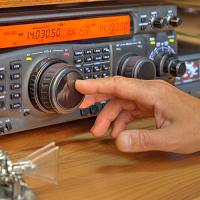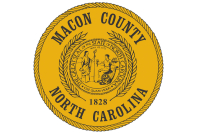Life and death aboard a tin can
By Dr. Robert H. Spiro Jr. • Guest Columnist
Friday, April 6, 1945, is a day emblazoned in my memory. Sixty-five years ago this week, off Okinawa in the East China Sea, a Japanese kamikaze plane crashed into the port (left) side of my destroyer (called by sailors a “tin can”), penetrating the hull and exploding on the opposite side of my ship — the USS Morris. The bow was almost severed from the ship, and the explosion was catastrophic. When it was over, 24 men were dead and 44 wounded, almost 30 percent of the ship’s crew.
America and its allies landed 182,000 soldiers and Marines on the southwestern coast of Okinawa Gunto, a small island in the Pacific Ocean just south of Japan’s main islands. I was aboard Morris as supply and disbursing officer, a lieutenant (junior grade) in my eighth Pacific campaign of WWII.
More than 2,528 ships descended on Okinawa in a last, devastating amphibious operation envisioned as the final onslaught before invading the Japanese home islands in October to end the war.
I recall the tension aboard the Morris on the eve of Easter Sunday, April 1. Before midnight, in the pitch dark, USS Morris and ships nearby quietly moved forward to be ready for the pre-dawn bombardment and landings. Dozens of destroyers were stationed about 14 miles offshore to intercept the expected attacks by swarms of desperate kamikaze planes.
April 6 was the most momentous day in the history of USS Morris. This was no accident, for the admiral who commanded all Japanese forces in the East China Sea (Admiral Toyoda) began his Operation Ten-Go in earnest that day, trying to stem the American tide. He had available 699 aircraft, 355 of them kamikazes. This was to be the first of 10 massed kamikaze onslaughts called kikusu, or “floating chrysanthemums.”
A total of 182 Japanese planes in 22 groups attacked the U.S. Navy off Okinawa that day. Seventeen American ships were sunk or damaged by swarms of planes. Morris survived unscathed ... until just 38 minutes before sunset. Historian Samuel Eliot Morison noted that a Japanese plane, later identified as a “Kate” torpedo bomber carrying either a heavy bomb or a torpedo, appeared out of the setting sun, skipping just above the waves, and crashed into Morris midship. Fires spread rapidly and ammunition exploded. The fire main forward was severed. Fire hoses had insufficient water to stop the blaze.
I was at my battle station in the combat information center when it happened, with about a dozen shipmates, perhaps 20 to 30 feet from the explosion. We were knocked violently to the deck and the CIC was engulfed in total darkness. Dazed but uninjured, we dashed out on deck to find total chaos, with terrible damage to the forward half of the ship. The scene was one of dark wreckage, twisted metal, oil, fire and the noise of wounded and dying men. We pulled the wounded to safety, administered first aid, manned the fire hoses, organized rescue parties, and tried to save the ship.
Another destroyer and a destroyer escort finally arrived to help with the wounded and to fight fires. We thought that the ship would have to be abandoned as it developed a severe list (leaning) to the port side. But with the help of other ships and the heroic efforts of Morris’ surviving crew, it was saved.
About midnight, six or seven hours after being struck, the official action report notes that Morris slowly limped into the nearby anchorage archipelago of Kerama Retto:
“Underway with port engine ahead one-third, starboard engine ahead two thirds, maneuvering with the left rudder because of a large section of the hull bent outboard on the starboard side-at a speed of seven knots. Steering control in after steering with directions from bridge over JV circuit. Commenced pumping A-4 and A-6 to remove a 5 degree port list.”
The repair officer at Kerama Retto recommended that Morris be towed to sea and sunk, because it was “junk.” But during two months at anchorage, by incredible efforts of the surviving crew, Morris was patched up and set sail, returning to port in San Francisco’s Hunters Point shipyard on June 18, 1945.
American casualties in the Battle of Okinawa (65 years ago this week) were the highest of any campaign in WWII’s Pacific War: 49,151, including more than 12,000 killed or missing and more than 36,000 men wounded. The Army alone suffered 4,482 killed and 19,099 wounded. Navy and Marine losses were also high. The United States lost 36 ships sunk and 368 damaged. Japanese losses were staggering, with approximately 110,000 combatants and service troops killed. More than 42,000 Okinawans also perished.
Following the carnage, President Truman ordered two atomic bombs, and the terrible war was ended by Japan’s unconditional surrender on Sept 2.
(Dr. Robert H. Spiro Jr. left active duty in the Navy after the war, but remained in the naval reserve, retiring as a Rear Admiral in 1978 after 37 years of service. He earned a doctorate in history and served as a university professor, dean and president, Undersecretary of the Army, and National Executive Director of the Reserve Officer’s Association. He has served his country and his community in many other capacities over the years. A native of Asheville, he now lives in Charlotte. His son, Jay lives in Jackson County with his wife and their children.)





